

CERTIFIED SOUL NUTRITION KISLEV 5771 א"עשת הכונח ה"ב Wishing You a Happy Chanukah! ןכעליירפ א !הכונח
By Chanie Brod
By Rabbi Yitzchak Gornish
HEALTHY
Dear Reader,
As I sit 34,000 feet above sea level, on a returning flight from Johannesburg, South Africa, I can’t help feeling a bit envious…envious of the kosher consumer who lives in South Africa. The world of kosher in South Africa is absolutely astonishing – not just the amount of kosher food that is readily available, nor the broad variety alone, but something far more incredible.
Johannesburg, South Africa has just one certifying agency, one Beis Din, that sets the kashrus standards for the whole community. If a company wants to get its products kosher certified, they must go to the Beis Din of Johannesburg.
Now, you might say, “Well, that’s just not right. They have a monopoly on the whole market … What if the Beis Din rejects a company due to ulterior motives? Doesn’t such arrangement give the Beis Din complete (and perhaps too much) control over the entire market? That would (and should) never be allowed to happen here in the U.S.!”
But let us just step back a moment — all the monopoly issues might be true, but on the flip side, all of the kosher products in South Africa are subject to one standard of kashrus, and a pretty good standard at that. Though I’m not here to endorse or judge how the Beis Din sets or implements its standards, one thing I can say for certain — the kosher consumer is the big winner.
One might wonder, “If we all follow the same Torah, don’t we all have the same kashrus standards?”
CHASSIDIC
Compiled by Dina Fraenkel
SOUL NUTRITION
In reality, here in the U.S. and in Europe, every time a company fails to comply with a kashrus protocol from an individual kashrus agency there is always a second-rate agency waiting to give them a hechsher. This has happened endless times here at the ~,when an ~ certified company decides to lower its standards or violates its kosher contract, and the ~ must withdraw its certification. Instead of this company losing the right to produce a kosher product, a second-rate hechsher takes over, and the standard of kashrus is lowered. It doesn’t stop there. If the same company chooses even less compliance… an even more liberal hechsher will take over the certification and the standards of kashrus are lowered once again.
I’m not suggesting that all the separate agencies form one agency, but just like in the BeisHaMikdash where all the flames of the individual arms of the menorah faced the NerHaMarovi, it would be wonderful if we all held ourselves to the same one high standard that Hashem set forth in His holy Torah and stopped pitting agencies against one another. I may be dreaming…but at least I have a dream.
A Freilichen Chanukah,
Rabbi Chaim Fogelman Editor-in-Chief
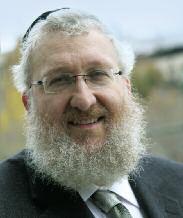
Chaim Fogelman
Dovi Scheiner
EDITOR: Dina Fraenkel DESIGN: www.SpotlightDesign.com
EDITOR-IN-CHIEF: Rabbi
EDITOR:
ASSOCIATE
3 4 6 8 13 14 15 16 18 20 22 23
THE ~
SPIRIT
IN...
YORK
QUESTIONS FOR
SHARE YOUR
KEEPING KOSHER
NEW
IN THE 1930s & 1940s
ERUV: DEFINING SPACE
L’man Achai Celebrates
of 11 year-old Camper
RECIPE
Murg Ka Tikka
BEHIND THE ~ Interview with Dayan Yitzchak Teller
IN ACTION
Mashgichim Conference
WAYS ~ KOSHERED
WORLD IN 2010
SPIRIT Chocolate KOSHER NEWS Camp
Bris
CHANUKAH
Nawabi
WHO’S
~
2010
134
YOUR
INSIGHTS:
LOOKING ABOVE NATURE
The ~ receives many letters/emails with kosher questions...
Dear Kosher Spirit,
Iremember as a child when the Jewish knife sharpener would come door to door to sharpen knives around the neighborhood. Now, my only option is to send my knives to a professional sharpening service. Is it permissible to get a knife sharpened by a professional knife-sharpener who also sharpens nonkosher knives?
Rabbi Hanoka responds:
It is permissible to get a kosher knife sharpened by a professional knife-sharpener, even if he also sharpens non-kosher knives. Even though the friction from sharpening causes a lot of heat buildup, the heat is meant to take away something from the knife in order to make it sharper, so it does not pose a kashrus problem.
Please note, an identifying sign is recommended to insure that your knife is returned to you. ~

www.OK.org • 3
Share Your Spirit
Readers share their thoughts about the last issue...
Dear Kosher Spirit
,
Thank you for the amazing Tishrei issue of Kosher Spirit. I am a volunteer at a prison through Aleph Institute and I brought a few copies of the magazine for the Jewish inmates there. The magazine is so well-rounded and insightful and the inmates really enjoyed reading it between the tefillos
Kind Regards, Ephraim
Dear Kosher Spirit, Ireceived the beautiful Kosher Spirit in my copy of The Jewish Press. I especially liked Chanie Brod’s article, “Keeping Kosher in the U.S. Army.” I am a chaplain for Jewish veterans and also work with Jewish soldiers. I would love to distribute copies of this article and reprint it in a few army publications.
Kind Regards, Michoel, Arlington, VA
Dear Kosher Spirit,
I read Rabbi Levy’s article in the Tishrei issue and I can only praise it, especially the way you addressed the cocoa issue with pride, and a fair and strong attitude.
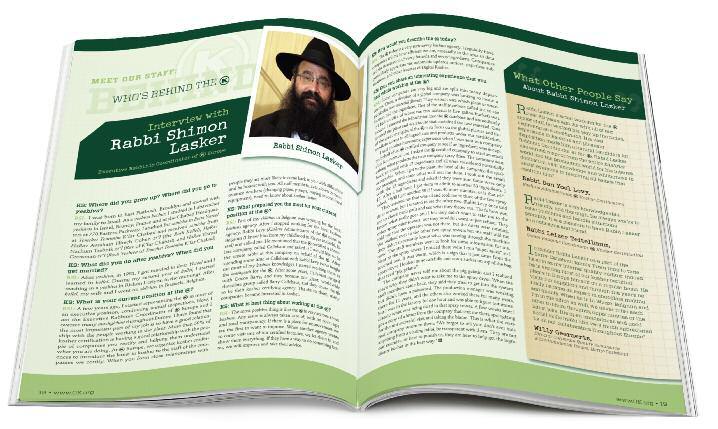
I also read the interview with Rabbi Lasker and I must add a few words to the article. I was with Rabbi Lasker in Italy last year and saw his dedicated work, skills and the professional manner in which he gets things done. Companies look up to him for guidance and direction, the system of kashering the ~ has in place is great and meets the highest standards that many hechsherim will not or cannot do, the supervision and great detail accountability, the knowledge of the mashgichim, and all about the supervision is perfect. It was a great experience for me to see it first hand and get to know Rabbi Lasker in person.
May Hashem give Rabbi Lasker and the ~ leadership many years of avodas hakodesh in providing Klal Yisroel with kosher food.
May we all be zoche to a gityur and a shnasgeulah.
Respectfully,
Rabbi Benyumin Arye Glick Executive Rabbinic Coordinator, Kashrus Division Central Rabbinical Congress of USA & Canada
We welcome your comments, submissions and letters to the editor.
MAIL: 391 Troy Avenue, Brooklyn, NY 11213
E-MAIL: editor@kosherspirit.com
FEEDBACK
4 • www.OK.org
Dear Kosher Spirit, Ihad
an amazing experience recently involving the ~ magazine Kosher Spirit, which I thought you would appreciate.
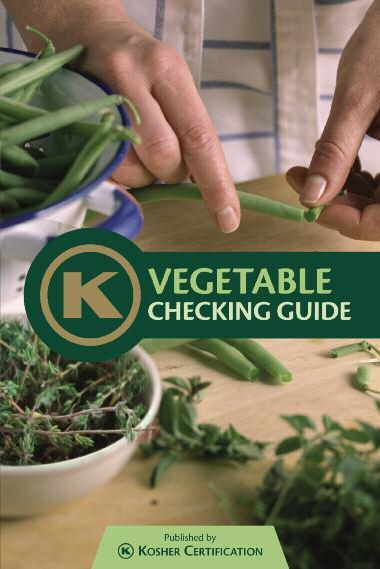
One late Thursday afternoon towards the end of the school year, one of the students in MachonChana approached me. She was going to visit friends who are shluchim and had bought a Shabbos treat for the kids: a bag of organic lollipops with a certain hashgocha. She was very excited that they were organic and had the USDA Organic symbol on the package. She wanted to know if I thought it was a good treat. I told her that it looked like a very healthy and nice treat, but that not everybody uses that hashgocha. Maybe she could find an equivalent with a better hashgocha? “But,” she said, “They’re ORGANIC! LOOK! The ingredients are all ‘natural’ and ‘kosher’! And it has the USDA Organic symbol!”
I explained to her that there is a food coloring which is also ‘natural’ but is not kosher because it comes from an insect, and that the USDA Organic symbol means nothing with respect to the kashrus of the product. The kosher symbol and all that it stands for is what we rely on for the kashrus of a product. She still didn’t get it. So I suggested she just make a phone call to the shluchim, tell them she found a terrific Shabbos treat for the kids, it has a certain hashgocha, and is thatgood for them. We left it at that, and I didn’t see her again until after Shabbos. I didn’t ask or say anything to her, but it was really weighing on me. She’s a very bright girl who has a great passion for learning and a dedication to growing in her Yiddishkeit
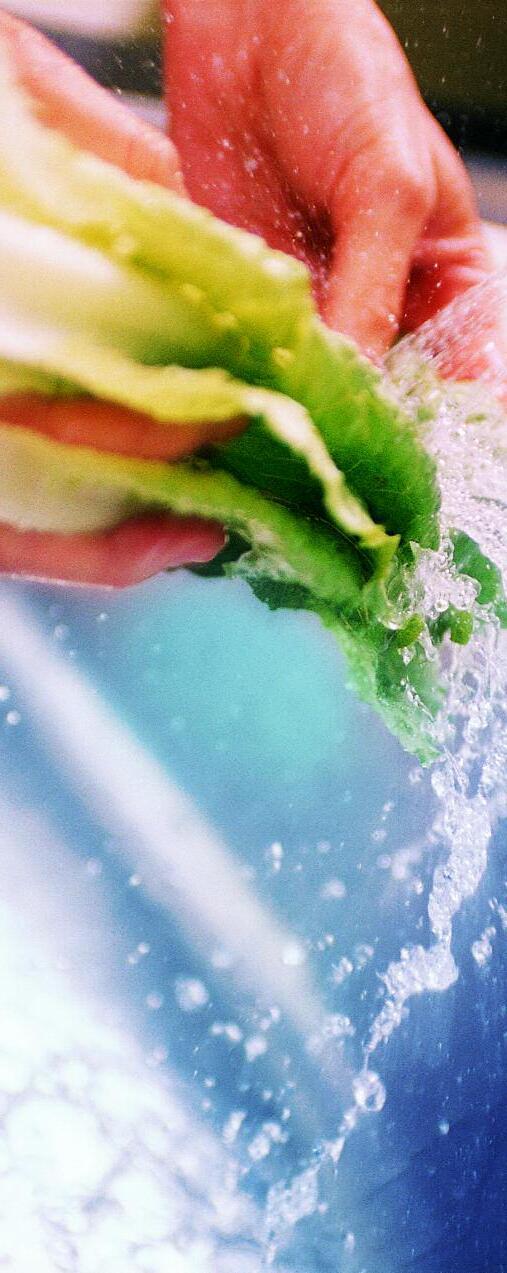
By hashgochah protis, I had been reading a number of back issues of Kosher Spirit at the time. Kosher Spirit is packed full of information that really gives the reader anappreciation of just some of the complexitiesthat go into making every and any kind of product kosher, and for the fact that not all hachgochas are equal and hold to the same high standards. SoI made a visit to the ~. The receptionist very graciously let me take back-issues of Kosher Spirit to my heart’s desire. I put together a package for my friend of about 8 or 9 issues, and gave them to her with an encouraging, “I came across these and thought it would be something you’d really appreciate.” Then I went out of town for three and a half weeks.
Within the first few days of my return, I bumped into her by hashgocha protis. It happened to be my birthday, so I sat down with her to give her a brocha. Before I could even broach the topic, she said to me, “You know, I really have to thank you so much for the kosher magazines you gave me. I’ve started to read them, and you know, I feel like the whole World of Kosher is opening up to me. Now I understand what you were talking about!”
We spoke about a variety of kosher topics, and in the end I gave her a brocha, but I think the real blessing she received was found in the Kosher Spirit
Keep up the good work, with regards,
 Malka
Malka
Also available on the App Store for your iPad, iPhone or iPod Touch

3rd edition of the popular ~ VEGETABLE CHECKING GUIDE Helping you do things right Available FREE at your local ~ certified restaurant or download a PDF @ www.OK.org
www.OK.org • 5
New York 1930s & 1940s in the
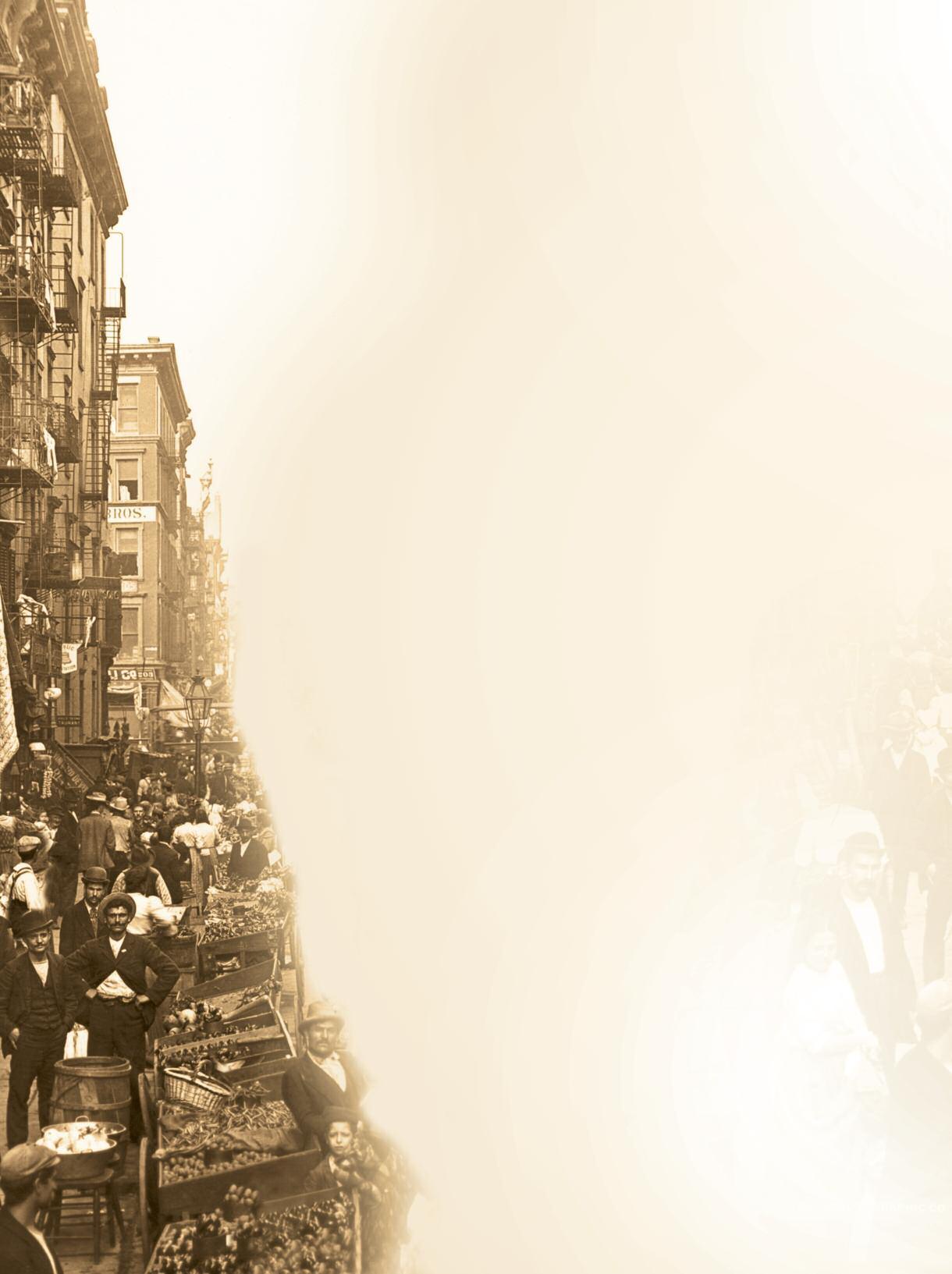 By Chanie Brod
By Chanie Brod
From sushi bars to steak houses, pizza joints to coffee shops, New York today has something to suit every kosher-observing palette.
For New Yorkers, keeping kosher presents a difficult challenge; the challenge of deciding which restaurant to patron or the challenge of choosing between a delicious chocolate chip and the allegedly healthier carrot muffin at the bakery on the corner. In the 1930s and 1940s, Jewish life in New York presented a different kind of challenge. There were no kosher supermarkets, no restaurants and bakeries on every corner, and a very small variety of mehadrin kosher products.
For many people today, a nickel is just spare change jingling in a pocket, or lost at the bottom of a purse, but for Miss Thelma Horowitz, a young Jewish girl growing up in the Bronx, a nickel each way was the daily travel fare to and from school. Together with her friends, the young Miss Horowitz would often forego the trolley-ride and walk about three miles each way to and from school in order to save her two nickels. This well-saved nickel could buy a trip to Coney Island, a pound of bread, or even a quart of milk!
For Miss Horowitz
and her family, cookies, bread and pastries were all home-baked. “Many places sold “kosher food”, so to speak, but kosher was not clear-cut. Shomer Shabbos stores were very scarce. In fact, in my neighborhood there was no ShomerShabbos bakery until much later.”
Cookies and challah were not the only homemade goods. “We lived in a house where my mother made everything,” Miss Horowitz recalls. When craving a quick snack, popping a slice of frozen pizza into the oven wasn’t an option; neither was opening a can of tuna. “In our house, there was no such thing as kosher canned food, no such thing as kosher frozen food. I had never heard of canned tuna fish!”
Today, supermarket shelves are lined with products stamped with kosher symbols, yet the abundant availability of kosher food is fairly novel. Having one receipt print out with meats, yogurt, fresh produce, sliced bread, coffee, and dozens of
6 • www.OK.org KEEPING KOSHER IN...
other kosher products paid for with the swipe of a card is the way of life in modern New York. The amount of flour and sugar bought is restricted only by the amount of space in the kitchen cabinet. Grocery shopping during Miss Horowitz’s childhood was different.
“A supermarket?” she laughs as if I had suggested something absurd. Apparently the 1940s was decades before supermarkets became the common location for a one-stop shopping trip. “Meat was from the butcher. Dairy was from the dairy store. Bread was from the bakery. Groceries were from the grocery store.”
Growing up in Brownsville, New York, Mrs. Chaya Popack spent much of her childhood in the grocery store. After Mrs. Popack’s father was told repeatedly not to come to work on Monday if he doesn’t show up on Shabbos,he opened up his ownbusiness, a grocery. “We stocked dairy, oil, sugar, eggs… miscellaneous grocery items.” she recalls. “The goods didn’t arrive neatly prepackaged and labeled. We received most foods in wooden bulk containers. Sugar, flour, and coffee all needed to be weighed and wrapped in wax paper. If someone was throwing a party they couldn’t just buy 10 lbs. of sugar, and after a late night you couldn’t have 7 cups of coffee to keep you functioning the next day. Many foods were rationed due to the war effort.”
A valued and limited resource, sugar was pre-weighed in ½ and 1 lb. sized packages and was kept behind the counter. Meat, chicken and canned foods were also rationed. Based on family size, each family would be allocated a certain amount of stamps valid for different dry goods.
“CholovYisroel was not easily available, but we were lucky with the dairy,” Mrs. Popack continues. “My grandfather was a mashgiach for a dairy farm. Once a weekhe would bring home a bucket of warm milk; it didn’t quite taste the same as the

bottles of pasteurized milk from the store. My grandmother would boil it, and then she’d make cheese and butter. It was a long time before I would walk into a store and choose between low fat, full fat, or fat free yogurts in plain, vanilla or strawberry flavor”.
Poultry wasn’t plucked off the shelf in a plastic-wrapped foam container, so Mrs. Popack and her family would go to a yard full of live chickens running around. “My mother would select our chicken, and the shochet would slaughter it in front of us. Then, we went home to soak and salt the chicken. Our trips to the chicken yard were pretty frequent aswe didn’t have a freezer.” she stated.
Not all of their food came from their grocery, and fresh produce was often bought from the local market. Pushcarts lined the streets of Brownsville and the vendors hocked their wares. Soup greens, fruit, vegetables, and beans were among the goods sold. It was a little rowdy market and multiple vendors with the same products vied for the customers’ attention. As a child Mrs. Popack’s mother would send her to the market for a bunch of soup greens—parsley, celery, and other vegetables. Three cents would pay for the bunch.
With the surge of Jewish immigrants escaping war-torn Europe came an increase in demand for kosher food and the kosher food market began to expand. In 1935, Organized Kashrus Laboratories was founded and began certifying a few kosher products; but it would be nearly half a century before reaching the more than 500,000 products it currently certifies. While today some 30-50% of products on the shelves have a kosher symbol, in the 1940’s only very few products were labeled “kosher”.
“You couldn’t go into a store and find dozens of items with a hechsher,” says Miss Horowitz. “There were not many choices of processed snacks and candy bars. You wanted a snack; you ate a fruit or a homebaked cookie. Although we didn’t have the selection we have today, we never felt we were lacking.”
Ms. Thelma Horowitz went on to marry Rabbi Berel Levy (ob”m), who took the helm of ~ Laboratories in 1967. Today, ~ Laboratories, now known as ~ Kosher Certification, is under the leadership of her son, Rabbi Don Yoel Levy, sheyichye. The ~ currently certifies over 500,000 products on six continents—a far cry from the handful of kosher certified products available during Mrs. Levy’s childhood! ~
www.OK.org • 7
Pushcarts lined the streets of Brownsville and the vendors hocked their wares...’
Eruv
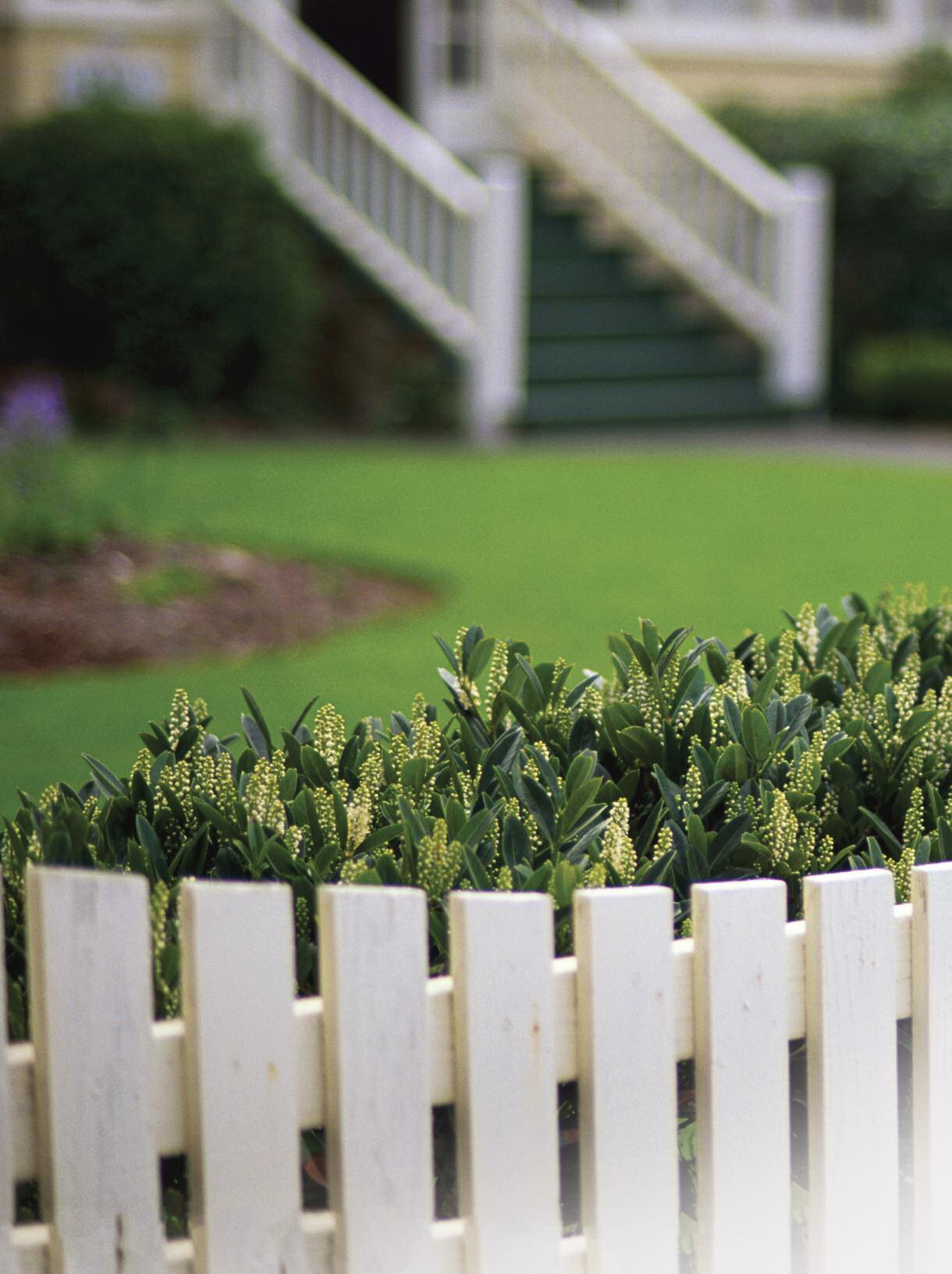
8 • www.OK.org
Defining Space
By Rabbi Yitzchak Gornish
The root of the word eruv is “blend”. This concept describes what occurs whenever one makes an eruv, whether an eruv tavshilin, which allows cooking on Yom Tov for Shabbos (a blending of “cookings”) or an eruv techumos, which allows “increasing” the permitting walking distance on Shabbos (blending two distinct areas) or the eruv chatzeros which allows for carrying between properties on Shabbos (blending of domains). When the Torah chooses to describe our father Abraham’s great commitment to Torah observance, it uses the example of his adherence to eruv to demonstrate that even Shabbos rabbinic decrees were observed by him.1 The eruv is a rabbinic method to allow an otherwise rabbinic restricted activity on Shabbos and Yom Tov.

www.OK.org • 9
The common form of eruv is eruv chatzeros. This eruv was established by Shlomo HaMelech to increase shalom between Jews.2 To understand how the eruv operates, it is imperative to explain the prohibition against carrying on Shabbos. As with all of the 39 prohibitions of Shabbos, carrying was practiced in the desert when the Jewish people were constructing the Mishkan. Since we were commanded not to construct the Mishkan on Shabbos, it is understood that any activity involving the construction was therefore forbidden on Shabbos. 3

In the Jewish desert encampment, there were three designated domains: public, private and Makom P’tur (noman’s land, a very small elevated area, i.e. the top of a fire hydrant). The Jews were commanded not to carry from a public to private (or the reverse) and four cubits (about 6-8 feet) in the public domain. (They were allowed to carry from public to Makom P’tur or private to Makom P’tur). The rabbis created an additional domain, a carmelis (from the terms meaning wet and dry – ie. gray area).4 While this domain would be considered non-public on a Biblical level, the rabbis were concerned that it closely resembled a public domain and hence prohibited the activities there associated with a public domain. In addition, the rabbis also prohibited carrying from one private domain to another. The eruvchatzeros would allow this activity provided that certain conditions are met. The reasoning behind this eruv is to connect the non-private and private domains into one large private one. This process is somewhat complex. One can also construct a more limited eruv which will only unify actual private domains, excluding Biblical public and carmelis domains.
If one were to convert a Biblical public domain, one must first establish what constitutes this domain. Here again, several conditions must be met, the roadway must be at least 10
cubits (approx. 15-20 feet) wide, have no obstructions overhead, and it must not be a “dead end”. Some add an additional requirement that it is travelled by 600,000 people on a regular daily basis.5 The issue of those conditions has been grounds for much controversy over the ages because if one is considering an area to be a Biblical public domain, actual gates are required to convert that area to a private domain to allow one to carry on Shabbos. 6 Whereas, if the area did not meet all the necessary conditions then it would be considered a carmelis and that area would only require an enclosure of door frames or “tsuris hapesach” to allow for carrying.7 The rationale for door frames is that as a private domain may contain a doorway, it follows that doorways are considered enclosing an area.
The discussion of whether an average city street is a public domain or a carmelis has been the source of many disputes regarding creating eruvim in large cities. Both positions rely on original ideas to determine the correct classifications. The debate is whether to erect the eruv to assist those who
would carry inadvertently or are ignorant about the laws of Shabbos vs. the Shabbos observant public who will then carry in an eruv that incorporates leniencies. There is no set precedent, because each situation is unique and is subject to the positions of the rabbinical establishment located there. One should not compare different instances since each has its specific distinctions.
After it is established that a given area is a carmelis, one sets about erecting a series of posts (called lechis) in the areas that are not fenced off. Under certain circumstances, neutral barriers may also be considered contributing to the enclosure. These posts must be at least 10 tefachim (approximately 5 1/3 feet) high, according to the Rambam. These posts may not be placed further than 10 cubits apart, except if the majority of the enclosure is a solid fence.8 Most eruvim rely on the opinion of those who allow greater separation between the posts, as it is very difficult to construct an eruv with a post every 10 amos. Many communities follow the Rambam’s requirement that the entire
10 • www.OK.org
Above: The Eruv posts along the coastline in Miami Beach, FL
enclosure must be constructed of doorways less than 10 amos apart and forgo carrying in eruvim that use a separation greater than 10 amos. The Shulchan Oruch HaRav rules according to the Rambam’s position.9
Taught string or line connects the tops of the posts to complete the enclosure. The lines may not sway in a normal wind. While no physical requirements are made of the post, they must be able to support the lightest of doors. If the line does not pass over the top of the post the eruv is invalid. Ideally the posts should all be the same height since they are supposed to resemble door frames, however, each individual door frame can be a separate height. Although the connecting line should not dip more than 45 degrees, this won’t invalidate the eruv 10
It is a common misconception that the actual enclosures constitute the eruv. In actuality, it is a portion of designated food that is the eruv, but the proper enclosure is always necessary.
After the area is properly enclosed, one is then required to consolidate all
the separately owned domains into one. This is accomplished by providing bread in the portion of one grogres (fig-sized amount) for every person involved up to 18 grogres (approximately 2 loaves) and placing it in one of the houses. If there are more than 18 people involved in the eruv, the 18 grogres suffices for all. Now, as all those in the enclosure own bread in one of the properties, they are all one. Matzah is preferred since it keeps longer than bread. After everyone contributes, one person can acquire the bread in the name of all.11 There is a dispute regarding who needs to contribute bread based on whether the grouping is a property owner allowing his property to be used as a common area, or it is a partnership of all area residents. One question in this case is whether the bread collection must be kept with the actual property owner, or if it can be stored in a communal area, such as the shul 12
A blessing is recited while making the bread portion of the eruv and then a text which specifies this eruv allows for carrying between the individual houses and yards. If one is making both an eruv chatzeros and an eruv techumim together, there are opinions that one should amend the brocha to plural, or to spell out the specific eruvim (eruvchatzerosv’eruvtechumim).13
While one does not need to consent to be part of the eruv, if one dissents this ruins the eruv. Regarding an eruv in a town, if one has permission of the authorities to construct the eruv it is felt that this overrides requirement of individual consent and a private person may no longer object.14 When there are non-Jewish resident
in the enclosure, one is required to procure permission to trespass on his stake of the property by leasing it.15

It should be noted that while this eruv is primarily beneficial for Shabbos carrying, in fact, even on a YomTov one must limit his carrying to items required for the holiday.16 An eruv helps make all carrying permitted on Yom Tov. Care should be taken that even with an eruv one does not carry items need for the following day of YomTov since that is part of the prohibition of preparing on one holiday for the next. An eruv allows one to carry on Yom Kippur even though in theory one cannot partake of the communal bread.17
Eruv & Kashrus
While at a glance one would not associate an eruv with kashrus, they are in fact, closely related. Admittedly, eruvai techumim would rarely be utilized (unless one needed to spot-check a certain facility on Shabbos which could only be facilitated with an eruv techumim). But eruv tavshilin is utilized in hotel programs when Shabbos follows Yom Tov 18 The event mashgiach must be instructed to correctly make this eruv and remember to implement it.
The eruvchatzeros play a big part in food service events scheduled on Shabbos. The hechsher must determine if an eruv will be required and the mashgiach must be supplied with sufficient time, material and manpower to construct the eruv. This cannot be done while supervising the kitchens. In addition, he should request from management the schedule for deliver-
www.OK.org • 11
It is a common misconception that the actual enclosures constitute the eruv...
ies and trash collection since these large trucks may inadvertently destroy the eruv. Instructions must be given that if a kosher eruv is knocked down on Shabbos, it is permitted for a non-Jew to rebuild it on Shabbos 19 As the mashgiach cannot consult with the kashrus agency on Shabbos, it is imperative that he be well versed in these halachos.
Many times an eruv is required because the hotel does not have sufficient storage/refrigeration space, and the caterer must utilize his truck during Shabbos for these purposes. An eruv of 3-4 posts would allow for this activity by connecting the truck to the building. Some caterers supply posts with nails on the tops that are sunk into self-standing cement pails which and can quickly be placed in the proper positions. The posts are connected with fishing line which allows quick construction.
~ mashgichim set aside the loaves of bread for the kosher guests, but it is only required for an event going
into Shabbos and can then be eaten. (When an event spans more than one Shabbos, the bread must be saved until the last Shabbos or prepared again before the next Shabbos.)
When the establishment is owned by a Jew, the prevailing opinion is that when a landlord has access to his apartments or keeps his belongings in them (definitely the case in hotels where you are not renting a specific room and the management can change your room at their discretion) then the loaf is not required.20 It is also assumed that a manager has a bed somewhere on the premises. Regardless if a mashgiach sets aside bread for an eruv, he will not make a brocha on it. Of course, during Passover events only matzah would be used.
There are two possible scenarios when caterers serve guests in a hotel on Shabbos. Either the entire hotel is booked (i.e. Passover), or only a certain number of rooms are books for the Jewish guests (i.e. a bar mitzvah). In the former, since all of the guests
are supplied with food from the same kitchen and they have pre-paid, the premises can be “leased” from the non-Jewish ownership for a dollar and no eruv bread is needed since all of the guests are partners in the food. However, the second scenario, where the guests are invited to a simcha, then the host is considered to be a guest as well. Even though the host is supplying the guest with food, it will require a common eruv. However, a brocha is not required over this eruv since some authorities do not require an eruv in this scenario.21
As stated, eruv was established to increase peace among us. The Talmud states that three commandments have a common denominator –height.22 The height of a sukkah, eruv or light of the Chanukah menorah cannot be higher than twenty cubits since the eye will not notice them above that height. The connecting thread between these seemingly unrelated mitzvos is that they all indicate a boundary of sorts. An eruv is a property boundary, the schach of the sukkah marks the boundary of where one may eat during Sukkos, and the Chanukah lights are placed at the boundary of a room (the doorway or window). In the merit of respecting these boundaries and as we celebrate Chanukah, may we merit to be speedily restored to our rightful boundaries in EretzYisroel and rebuild the Beis HaMikdash with the coming of Moshiach now. ~
1
7 GemaraEruvin, 11b.
Chaim 366:3.
Chaim 477:4.
2
8 ShulchanOruch, Orach
Chaim 362:9.
13 MishnaBrurah, Orach
Chaim 366:79.
18 ShulchanOruch, Orach
Chaim 527.
3 Gemara
, 96.
4 Shulchan Oruch, Orach
Chaim 346:1-2.
5 ShulchanOruch, Orach
Chaim 345:7.
6 ShulchanOruch, Orach
Chaim 364:2.
9 ShulchanOruchHaRav, OrachChaim 362:19.
10 ShulchanOruch, Orach
Chaim 362:11; Sha’ar
Tziyon 36.
11 ShulchanOruch, Orach
Chaim 366.
12 ShulchanOruch, Orach
14 KovetzOhrYisroel vol. 2333; DivreiYatziv 2:173:6.
15 ShulchanOruch, Orach
Chaim 382:1.
16 ShulchanOruch, Orach
Chaim 528:1; MishnaBrurah 1.
17 ShulchanOruch, Orach
19 ShulchanOruch, Orach
Chaim 364:3; B’or Halacha.
20 Igros Moshe, Orach
Chaim, Aleph 141.
21 BikkureiHalachaalTosefes
Shabbos 2:13-17.
22 GemaraShabbos 22:1.
12 • www.OK.org
Gemara Yuma, 28b.
Talmud Yerushalmi, Eruvin 7, Halacha 9.
Shabbos
While at a glance one would not associate an eruv with kashrus, they are in fact, closely related.
Chocolate
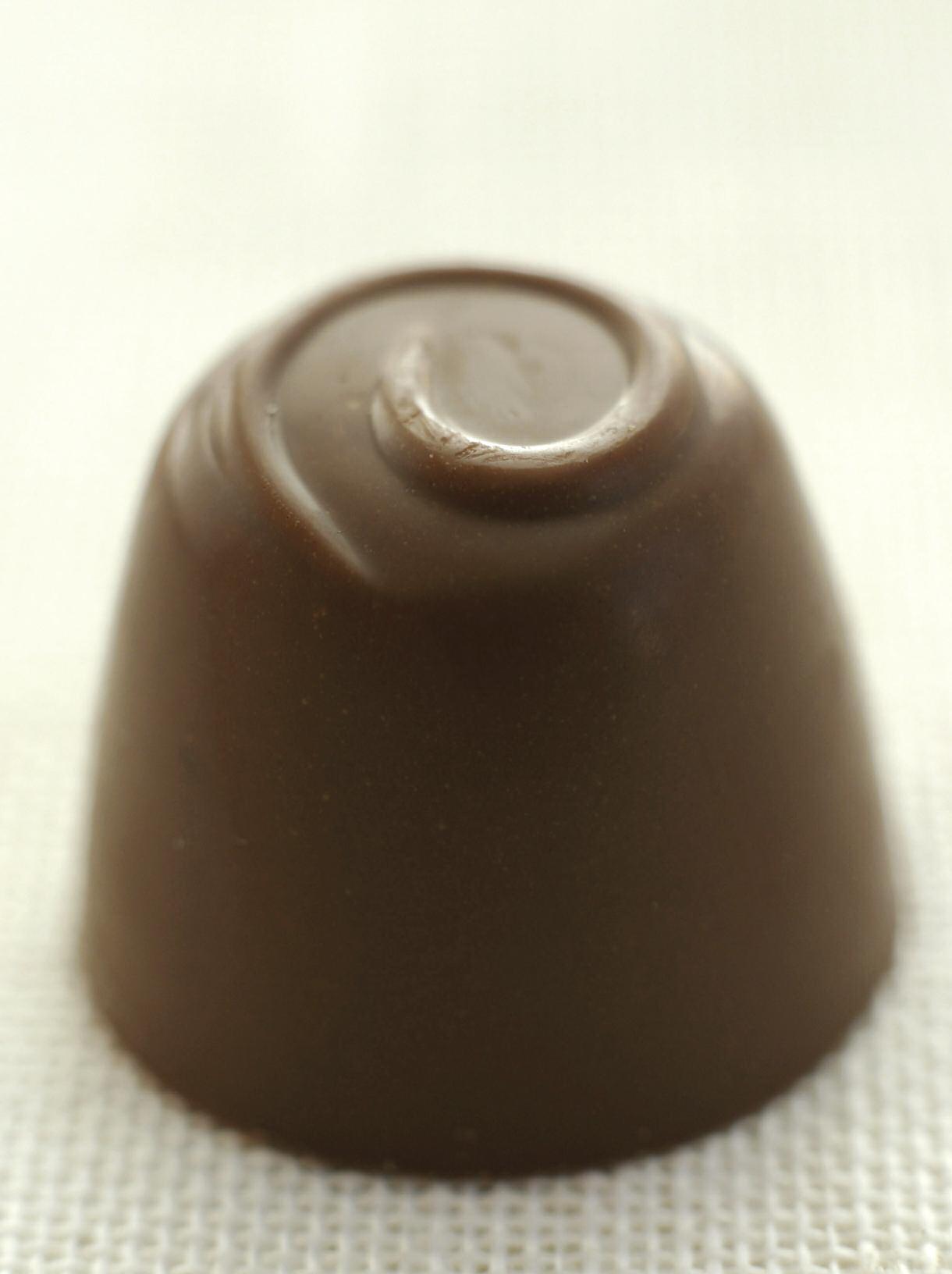
1 According to the USDA, dark chocolate is one of the most antioxidant rich foods available (more than five times the amount in blueberries). Antioxidant-rich diets have been linked to a lowered risk of heart attacks, stroke, cardiovascular disease, cancer, high blood pressure, cholesterol problems, arthritis, asthma, Alzheimer’s and more.
2 One study has shown that the smell of chocolate may actually relax you by increasing theta waves in the brain.
3 Cocoa butter in chocolate contains oleic acid, a mono-unsaturated fat. This is the same type of fat found in olive oil that may actually raise good cholesterol (HDL).

4 Cacao contains antibacterial agents that actually fight tooth decay.
5 A single bar of dark chocolate contains more than twice as many antioxidants as a bar of milk chocolate.
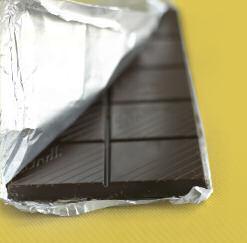
6 One ounce of milk chocolate contains about the same amount of caffeine as one cup of decaffeinated coffee.
7 A Harvard University study found that men who ate chocolate lived one year longer than those who didn’t.
8 Dark chocolate has been proven in studies to lower blood pressure and is considered healthy chocolate. ~
The largest chocolate bar ever made weighed 9,702 pounds and was over 16 feet long. It was 10 inches thick and took 3 days to make. The average American eats 88 pounds of chocolate per year, so it would take 110 years for one person to eat this chocolate bar.
www.OK.org • 13
~
Camp L’man Achai Celebrates Bris Of 11 Year-Old Camper
Recently, the Camp L’man Achai family celebrated the bris of 11 year-old Alexander Yakov Dovid (Alex). Five years ago, Alex and his family came to the U.S. from Russia. He attends Chabad’s Released Time program at his public school and his counselors there suggested that Alex attend Camp L’man Achai At camp, Alex learned to read Hebrew, grew in his understanding of Yiddishkeit and made many new friends.
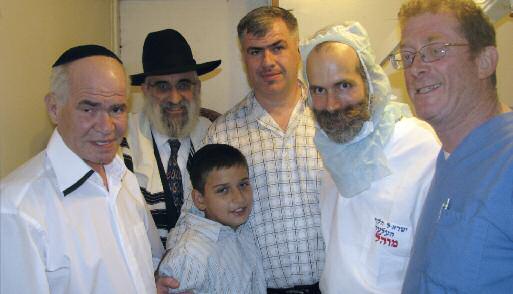
At the end of camp banquet, Alex spoke about his immense growth at camp and declared his commitment to continue growing further in Yiddishkeit. Ten days later, he celebrated his bris with his family and camp staff who are now his good friends. Rabbi Yisroel Heller, Camp Rabbi and expert mohel, per-
formed the bris and Rabbi Don Yoel Levy, Kashrus Administrator of ~ Kosher Certification and long time benefactor of Camp L’Man Achai, served as sandek After witnessing Alex’s commitment and dedication firsthand, both his father and grandfather agreed to have a bris, as well. Following the bris, Alex and his father both had a Pidyon HaBen, as they are both firstborn boys. The Kohen for the Pidyon HaBen was Camp L’man Achai Executive Director Rabbi Shmuel Kleinman.

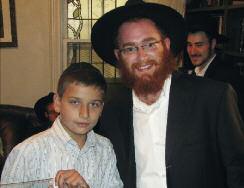
Rabbi Chaim Fogelman, a regular performer at camp L’man Achai and one of Alex’s favorite Jewish singer, sang his favorite song, “Can You Hear the Footsteps of Moshiach”. Rabbi Fogelman said L’Chaim and told Alex that he was so brave and the envy of all the rabbis in the
room for his MesirasNefesh



He went on to say, “Surely Avraham Avinu is looking down at this bris and smiling as he welcomes you into Bris Avraham.” Alex’s counselors joined together and bought him an iPod to celebrate the great simcha. The entire simcha was arranged by Rabbi Yitzchok Steinmetz, Director of Camp L’Man Achai.
Fifteen years ago, Camp L’Man Achai was created to fill the void in Jewish summer camping for boys from non-observant or newly observant families. The camp caters to 7-16 yearold boys and boasts a handpicked staff of superb counselors from various yeshivos. Camp L’manAchai alumni have successfully gone on to enroll and succeed in Jewish Day Schools, TalmudTorah’s and yeshivos around the world. Ten years ago, Camp L’man Achai purchased its own
162 acre campground in Andes, NY in the Catskill Mountains. The camp can accommodate over 250 children and with a beautiful lake, sports fields and recreational facilities. The camp features a renowned Jewish educational program, as well as off-site trips and on-site extracurricular activities. “This camp is the real deal. It can and it has changed many kids’ lives and opened them up to the beauty of Torah and mitzvos,” said Rabbi Chaim Fogelman.

Camp L’manAchai strives to make the camp experience available to any Jewish boy who is interested in attending and provides large scholarship grants to ensure this is possible.
To contact Camp L’man Achai, please call (718) 436-8255 x107 or email info@camplmanachai.com
14 • www.OK.org
K~SHER NEWS
Nawabi Murg Ka Tikka
½ cup Sour Cream (non-dairy)
½ cup Cream Cheese (non-dairy)
4 tbsps. Ginger paste
4 tbsps. Garlic paste
2 teaspoons salt
2 teaspoons black pepper (crushed)
2 teaspoons red chili powder (crushed)
2 teaspoons dry coriander powder
½ cup lemon juice
1 chicken (breast or thigh) skinless and cut into 2 inch chunks
¼ cup finely chopped fresh coriander leaves (to garnish)
Combine first nine ingridents in a mixer and blend well for five minutes. Pour mixture into a large bowl and add chicken. Mix well. Cover the bowl and refrigerate. Allow to marinate for at least four hours. Thread chicken onto skewers. Preheat oven or grill to a medium high temperature (200 C/400F). Place the skewers on the grill or oven racks with a tray underneath to catch drippings. Roast until the chicken is browned on all sides and tender.
Notes:

1. Will taste best when cooked on a grill with charcoal.
2. Squeeze fresh lemon on the chicken to serve.
The word tikka means bits, pieces, or chunks. Chicken tikka is an easy to cook dish in which chicken is marinated in special spices and then grilled on skewers. This is one of India’s most popular dishes.

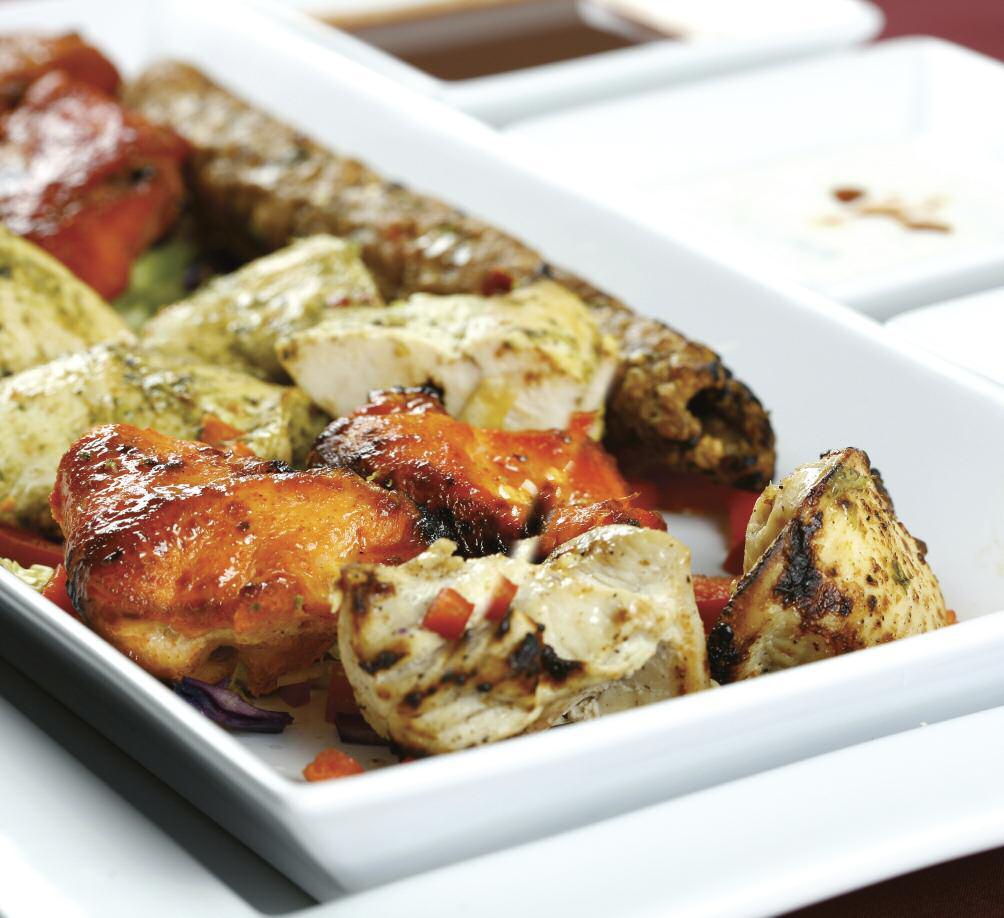
C h an u k a h R e c i p e
www.OK.org • 15
DAKSHIN INDIAN BISTRO is certified kosher by ~ Kosher Certification. It is Glatt Kosher, Chassidishe Shechita, Pas Yisroel and has a Mashgiach Temidi on premises. Located at 1154 1st Avenue, New York, NY 10065, (212) 355-4600.
MEET OUR STAFF:
BEHIND
WHO’S BEHIND THE ~
Interview with Dayan Yitzchak Teller
Dayan Yitzchak Teller
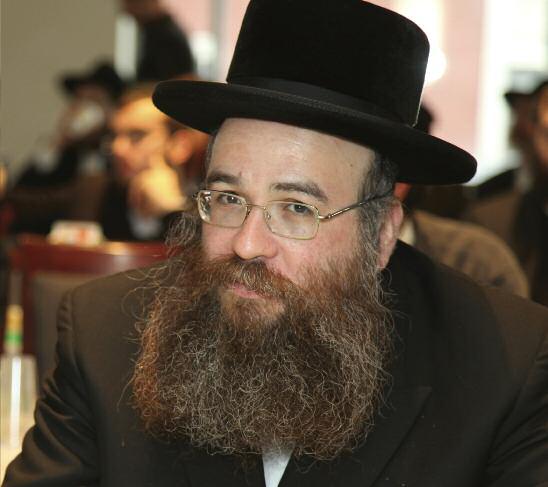
KS: Where did you grow up? Where did you go to yeshiva?
RYT: I grew up in B’nei B’rak in Eretz Yisroel and attended the Belzeryeshivos throughout my years in school.
KS: What did you do after yeshiva? When did you get married?
RYT: After yeshiva, I got married in 1986. My wife is from Antwerp, Belgium, so we moved to Antwerp where I studied halacha in the Belzer kollel for 13 years and gained practical experience in rabbonus under various rabbonim, including Rav Tuvia Weiss shlita. I knew Rabbi Levy for many years and he often stayed with me when he came to Belgium on business, so I started to occasionally visit facilities with Rabbi Levy and I saw halacha come alive in practical kashrus. In 1994, I started working as a mashgiach for the ~ and continued up the ladder to my current position.
KS: What is your current position at the ~?
RYT: I am currently an Executive Field Representative for ~ Europe. My responsibilities involve monitoring all of the kosher transport and storage in Europe. Many liquids from Asia and all over the world come through Europe for transport and storage, including oils, oleochemicals, fatty acids, and fatty alcohols.

They come by barge to be stored in the ports of Rotterdam and Antwerp and my job is to monitor kosher compliance in these areas.
KS: What prepared you the most for your current position at the ~?
RYT: My 13 years of kollel, where my studies were concentrated in halacha, as well as the hands-on experience of visiting factories with Rabbi Levy prepared me most for my current position. In addition, it’s written in Chovos HaLevavos that one should work in something close to his heart. I am naturally drawn to halacha and kashrus is a field that I feel is close to my heart.
KS: What is the best thing about working at the ~?
RYT: The best thing about working in the ~ is that the ~ is very organized. I am personally a naturally organized person, so I appreciate the system and protocol in place to ensure the highest level of kashrus supervision. I feel that the ~ has the most superior database and sophisticated system of data management and mashgiach reports.
KS: How would you describe the ~ today?

RYT: I would describe the ~ as the leading authority in kashrus. The experienced rabbis at the ~ are at the

~
16 • www.OK.org
forefront of kosher supervision and the protocol for supervision and data management is the best in the world.


KS: Is there anything else you would like to share with us?
RYT: Many times I come to a factory and the personnel think I can give them a hechsher on the spot, with no inspection or changes necessary. Either the factory personnel have no idea about kashrus, or they were previously certified by a second-rate agency that gave a “rubber stamp” certification with little effort needed. I am always shocked by how little many people know about kashrus when it has become so mainstream in both the industrial and consumer world. A lot of my job revolves around teaching the facility personnel about kashrus and helping them have respect for the seriousness and importance of abiding by kosher protocol and having a high-level kosher certification.
Rabbi Yitzchak Teller is also a Dayan in the BelzerKehilla in Antwerp.
What Other People Say About Dayan Yitzchak Teller



“
Rabbi Teller started working for the ~ many years ago at a complicated oil plant in the Netherlands. His grasp of the facility was superior and led to Rabbi Teller becoming one of the foremost experts in the kosher oil industry. Rabbi Teller’s methodical examination of every detail very carefully makes his reports a pleasure to read. Rabbi Teller’s approach, coupled with the fact that he is a prominent talmid chochom and Dayan in the Antwerp Belz community, makes him the prime candidate to be the expert in kashrus that he is. These are the attributes we look for in our personnel at the ~
Rabbi Don Yoel Levy, Kashrus Administrator, ~ Kosher Certification
Rabbi Teller and I have been working together for over 15 years. He is a very kind and pleasant person and it is a pleasure to work with him. Rabbi Teller is a great scholar with a deep understanding of halacha. He has the greatest combination of characteristics that a kashrus agency can ask for, which really brings the ~ to a higher level.
Rabbi Shimon Lasker, Rabbinic Coordinator, ~ Europe
Rabbi Teller is a great person to work with. He is very kind, thorough and is a talmid chacham who is very well versed in halacha
Rabbi Leizer Teitelbaum, Senior Rabbinic Coordinator, ~ Kosher Certification
“...one of the foremost experts in the kosher oil industry”
www.OK.org • 17
– Rabbi Don Yoel Levy, Kashrus Administrator, ~ Kosher Certification
in Action!


At the 2010
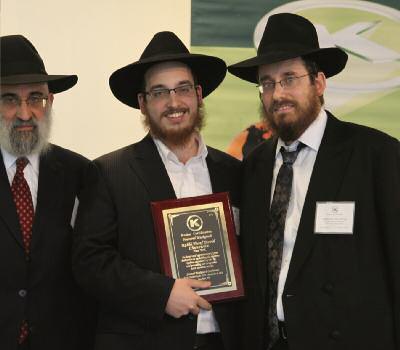
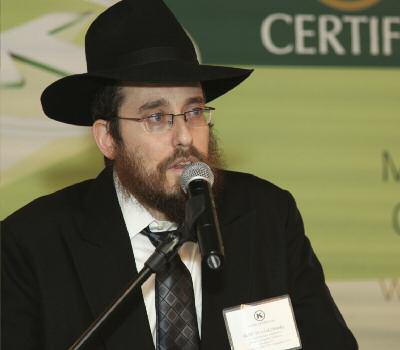
Mashgichim Conference
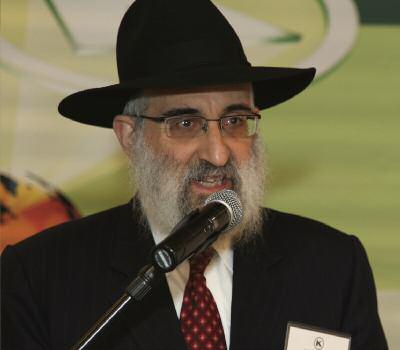
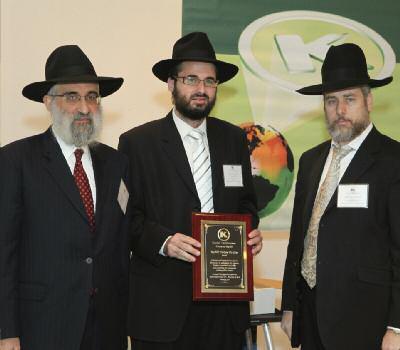

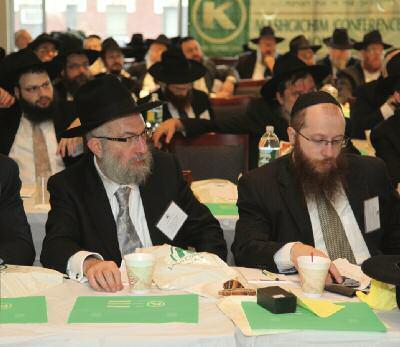
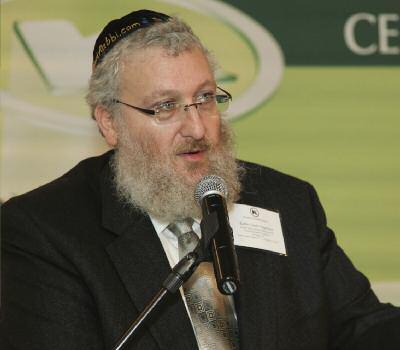


 Rabbi Chaim Fogelman, Conference Chairman
Rabbi Chaim Fogelman, Conference Chairman
~
Rabbi Yitzchak Hanoka, Rabbinic Coordinator
Featured Company, Sabra Dipping Co. Kalman Goodman (Manager), Rabbi Mendy Weiss (Mashgiach), Rabbi Don Yoel Levy, Meiky Tollman (Exec. VP), Rabbi Yitzchak Hanoka
18 • www.OK.org
Rabbi Don Yoel Levy, Featured Rabbi –Rabbi Yakov Perlov,Rabbi Ahron Haskel
Photos by Chaim Perl www.chaimperl.com
Featured Mashgiach – Rabbi Yosef D. Chanowitz, Rabbi Yitzchak Hanoka
Rabbi Don Yoel Levy, Kashrus Administrator
a copy of
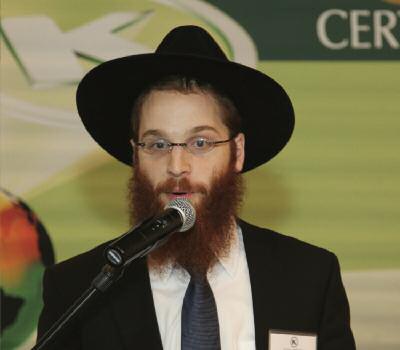

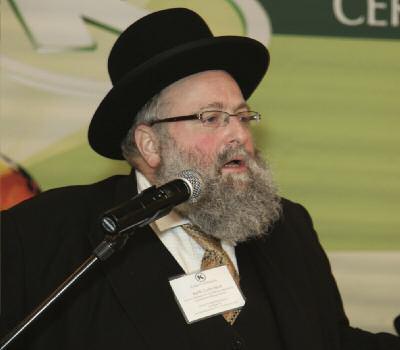

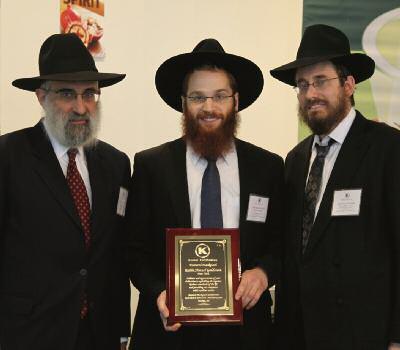

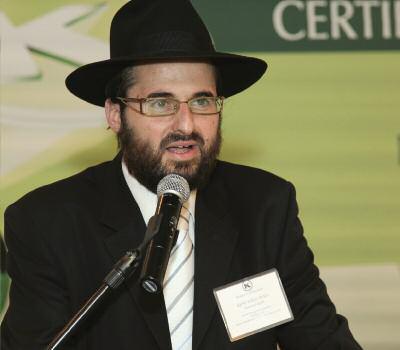

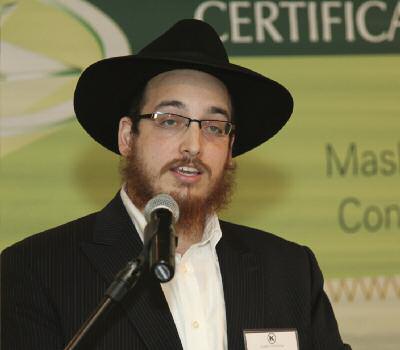

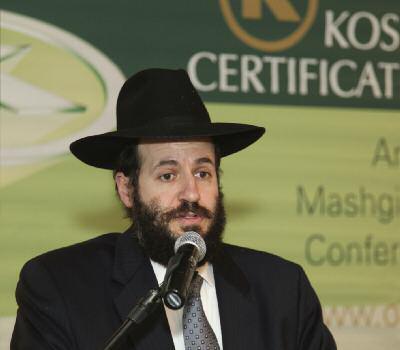

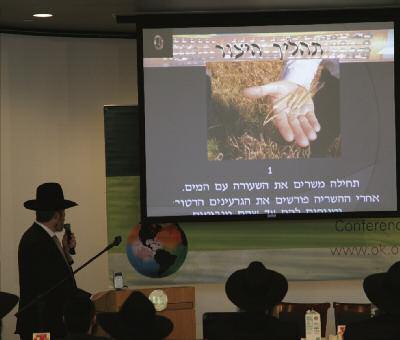

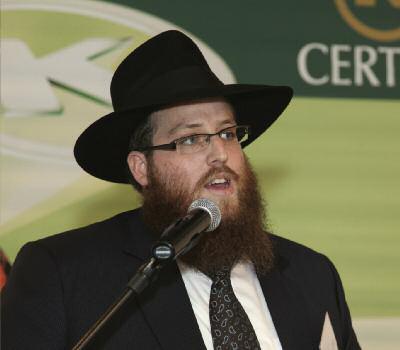

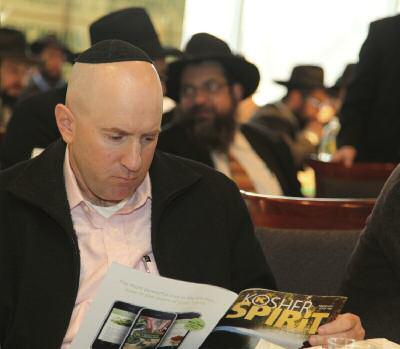


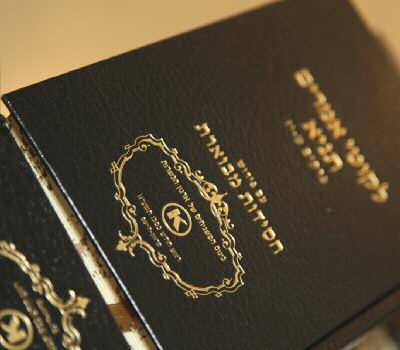

 Mr. Meiky Tollman (Exec. VP of Sabra Dipping Co.) reading
Kosher Spirit
Rabbi Eli Lando – Chief Customer Relations Officer
Mr. Meiky Tollman (Exec. VP of Sabra Dipping Co.) reading
Kosher Spirit
Rabbi Eli Lando – Chief Customer Relations Officer
www.OK.org • 19
Rabbi Ahron Haskel, Director, ~ Israel
Rabbi Yitzchak Gornish Rabbinic Coordinator
Featured Mashgiach Rabbi Yosef D. Chanowitz
Featured Rabbi Rabbi Yakov Perlov, Israel
Rabbi Don Yoel Levy, Featured Mashgiach – Rabbi Shmuel Goldstein, Rabbi Yitzchak Hanoka
Rabbi Zushe Blech, Guest Speaker
Featured Mashgiach – Rabbi Shmuel Goldstein
A KNEADED TWIST BROOKLYN, NY USA
Challah
A.R. SPA
ANGRI SALERNO, ITALY
Tomato products
A.Y.M. OFFICE SERVICE AGENCIES LTD.
RISHON LEZION, ISRAEL
Cereals
ACCUTECH FILMS, INC.
COLDWATER, OH USA
Packaging
ACTION NUTRITION
LOS ANGELES, CA USA
Dietary supplements
ACTION NUTRITION
LOS ANGELES, CA USA
Vitamins, supplements & nutritionals
AL RITE FRUIT & SYRUPS INC.
MIAMI, FL USA
Bases & syrups, cocktail mixes, juice & juice concentrates
ANGEL CAMACHO
ARGENTINA S.A.
SAN MARTIN, MENDOZA
ARGENTINA
Pickled products & olives
ANHUI DANGSHAN TONGTAI FOODS CO., LTD
SUZHOU, ANHUI PROVINCE
CHINA
Fruit (canned), vegetables (canned)
ANMAR INTERNATIONAL LTD
BRIDGEPORT, CT USA
Vitamins, supplements & nutritionals
ATLANTIS LTD.
DNEPROPETROVSK, UKRAINE
Wine
134 WAYS
BARON INTERNATIONAL TRADING LTD OR YEHUDA, ISRAEL
Frozen foods, potato products
BASIL NY
BROOKLYN, NY USA
Restaurant
BESTMALZ AG
HEIDELBERG, GERMANY
Malt
BIOCAPS ENTERPRISE, INC
EL MONTE, CA USA
Capsules
BISSALEH
SUNNY ISLES BEACH, FL USA
Restaurant
BRAD’S ORGANIC
HAVERSTRAW, NY USA
Soup & soup mixes
BUBBE HINDA’S BREADS
BROOKLYN, NY USA
Baked goods, breads, bagels & rolls, candy & chocolates
CAP AGROPECUÁRIA E
INDUSTRIAL LTDA
SÃO PAULO, BRAZIL
Nuts & seeds
CAPRICORN SEAFOOD
BROOKLYN, NY USA
Fresh fish
CARAGUM INTERNATIONAL
MARSEILLE, FRANCE
Caragum
CASCADE CHEESE CO
CASCADE, WI USA
Dairy products
CHEMSYNERGY


MEERBUSCH, GERMANY
Chemicals
CIBO VITA, INC
SADDLE BROOK, NJ USA
Candy & chocolates, nuts & seeds
CIXI DAFENG VEGETABLES CO., LTD.
(CIXI) NINGBO, ZHEJIANG
CHINA
Vegetables (frozen)
COLONIAL COOKIES
KITCHENER, ON CANADA
Baked goods
CONSERVERA PENTZKE S.A.
SANTIAGO, CHILE
Fruit concentrates
CROWN FOOD DISTRIBUTORS
NORTH BERGEN, NJ USA
Nuts & seeds
DAKSHIN KOSHER
NEW YORK, NY USA
Restaurant
DELICE CO., LTD.
SEONGNAM-CITY, KYUNGGI-DO
KOREA
Snack foods
DUCON LIMITED
DUBAI, UAE
Aluminum foil
EIGHTEEN RESTAURANT
NEW YORK, NY USA
Restaurant
ELK RIDGE ALMONDS, INC.
MADERA, CA USA
Snack foods
EUROPA RESTAURANT & GRILL
MIAMI, FL USA
Restaurant
FEICHENG TIANHE
FOODSTUFF CO., LTD
FIECHENG, SHANDONG
CHINA
Vegetables (frozen)
FLAVRZ BEVERAGE
CORPORATION
GLOUCESTER, MA USA
Beverages
FOOD BASKET CO.
GIZA, GREATER CAIRO, EGYPT
Fruit (frozen)
FOOD RETAIL AND PRODUCTION CS GMBH
ELSTERAUE OT ALTTROGLITZ, GERMANY
Starches
FOSHAN CITY NANHAI
DISTRICT QIRUN FOOD CO., LTD
FOSHAN, GUANGDONG, CHINA
Sugars
FROZEN PULPS DE MEXICO, S.A. DE C.V.
IRAPUATO, GUANAJUATO, MEXICO
Juice & juice concentrates
FUJIAN FULONG FROZEN FOODS CO., LTD
LONGHAI, FUJIAN, CHINA
Vegetables (frozen)
FUTURE PRELUDE SDN BHD
PELABUHAN KLANG, SELANGOR
MALAYSIA
Glycerine, oil & shortenings
GEL’PAM
FRANCE
Herbs
GHANA NUTS LIMITED
TECHIMAN, BRONG AHAFO
REGION, GHANA
Nut butters, oil & shortenings
GLOBAL GOODS

HIGHLAND, UT USA
Agave
GOURMET NUT
BROOKLYN, NY USA
Candy & chocolates, nuts & seeds
HADAROM FOOD INDUSTRIES
RISHON LEZION, ISRAEL
Fruit (fresh packaged)
new companies 20 • www.OK.org
~ Koshered your world in 2010!
HAINAN ALLIED PACIFIC BIOTECH CO., LTD
CHENGMAI COUNTY, HAINAN
CHINA
Fish products
HARBOES BRYGGERI A/S
SKAELSKOER, DENMARK
Malt extract
I.M. DANDAR S.R.L.
CHISINAU, MOLDOVA
Snack foods
INNOVATIVE FLEXPAK
SPRINGVILLE, UT USA
Dietary supplements
INTERNATIONAL PLASTIC ENGINEERING CO. LTD.
HAIMEN, JIANGSU, CHINA
Plastic products
JERUSALEM CHEESE INC.
BROOKLYN, NY USA
Cheese
JIUJIANG HOLLY FOODS CO.,
LTD
JIANGXI, CHINA
Ginger
JSC SPARTAK
GOMEL, BELARUS
Candy & chocolates
KALLE GMBH
WIESBADEN, GERMANY
Plastic products
KAWU SP. Z.O.O.
LIPNO, POLAND
Pasta & grains
KEMIN DO BRASIL
INDAIATUBA, SAO PAULO, BRAZIL
Food additives
KEMIRA TIANCHENG
CHEMICALS (YANZHOU) CO.,
LTD
YANZHOU, SHANDONG, CHINA
Chemicals
KOLYMPARI SA
GREECE
Oil & shortenings
KOSHER EXPRESS/SEVAN
BROOKLYN, NY USA
Restaurant
KRAUL & WILKENING UND
STELLING GMBH
HANNOVER, LOWA SAXONY
GERMANY
Alcohols
KREHALON INDUSTRIE BV
AK DEVENTER, NETHERLAND
Plastic products
LALLEMAND SPECIALTIES, INC.
MILWAUKEE, WI USA
Cultures & rennets
LANG NATURALS
MIDDLETOWN, RI USA
Dietary supplements
LODATO GENNARO & C. S.P.A.
CASTEL SAN GIORGIO, SALERNO
ITALY
Legumes, sauces, soups, tomato
products, vegetables (canned)
LUNCH BOX - 2ND AVE
NEW YORK, NY USA
Restaurant
MATCO RICE PROCESSING LTD
KARACHI, SINDH, PAKISTAN
Rice & rice flour
MEDITERRANEA BIOTECNOLOGIE SRL
TERMOLI (CB), ITALY
Acids & acidulants, cultures & rennets
MEITAV KOSHER FOOD LTD.
SZEGED, HUNGARY
Dairy products
MICHAEL LERER
NESS -ZIONA, ISRAEL
Wine barrels
MIDLAND FARMS INC. #36-
1661
MENANDS, NY USA
Cheese
MORAD WINES LTD
YOKNEAM, ISRAEL
Wine
MOUNTAIN BREAD, AUSTRALIA
RESERVOIR, VIC. AUSTRALIA
Bread
MY MOST FAVORITE FOODS
NEW YORK, NY USA
Bakery
NANTONG NORIYA FOODS CO.
JIANGSU, CHINA
Seaweed
NARGILA PLACE
NEW YORK, NY USA
Restaurant
NORDIC SUGAR A/S
COPENHAGEN K, DENMARK
Sugar, sweeteners
NUESTRO QUESO LLC
ELK GROVE VILLAGE, IL USA
Dairy products
OMIRA OBERLAND-
MILCHVERWERTUNG GMBH
RAVENSBURG, GERMANY
Dairy products
ORGAL INTERNATIONAL S.R.O.
KOMARNO, SLOVAKIA
Cookies & crackers, pretzels
PANACHE CUISINE
BALTIMORE, MD USA
Salads
PERI HAGAFFEN LTD.
RISHON LEZION, ISRAEL
Wine
PRIVATE LABEL FOODS OF ROCHESTER INC.
ROCHESTER, NY USA
Sauces
R. SOLOMON
WATERLOO, NSW, AUSTRALIA
Baked goods
RIENZI & SONS, INC.
ASTORIA, NY USA
Legumes, tomato products
ROCA LABS / חקור תודבעמ
TAMPA, FL, USA
Vitamins, supplements & nutritionals
S.A. FABRICA DE CONSERVE
DIN CALARASI
CALARASI, MOLDOVA
Fruit (canned), vegetables (canned),
S.A. FRANZELUTA
CHISINAU, MOLDOVA
Breads, bagels & rolls
SAVANNAH SURFACTANTS
LTD.
GOA, INDIA
Emulsifiers & stabilizers
SIMPLY FRESH
BROOKLYN, NY USA
Fish products
SONS OF BAHEEG KAWAR
INDUSTRIAL LTD
NAZARETZ ILLIT, ISRAEL
Alcoholic beverages
SOTECH, INC.
TUSCALOOSA, AL USA
Chemicals
STEINER CHEESE
BALTIC, OH USA
Cheese
SUNSHINE’S PRIDE DAIRY
WINCHESTER, VA USA
Whey
SWISS HERITAGE CHEESE (PLANT #55-215)
MONTICELLO, WI USA
Dairy products
TA’AMAN FOOD MARKETING
LTD
MISHOR ADUMIM, ISRAEL
Cereals, sauces, wine
THE NUTTY GOURMET, LLC.
MODESTO, CA USA
Nuts & seeds
THILMANY, LLC
KAUKAUNA, WI USA
Packaging
THIRUMALAI CHEMICALS
LIMITED
RANIPET, TAMIL NADU, INDIA
Chemicals
TIANSHUI CHANGSHENG
FOOD CO., LTD
TIANSHUI, GANSU, CHINA
Fruit / vegetables (canned)
TIBERIAS NEW YORK, NY USA
Restaurant
TIENSE
SUIKERRAFFINADERIJ
TIENEN, BELGIUM
Sugar
TONGLU FOREIGN FROZEN FOODS CO., LTD.
HANGZHOU, ZHEJIANG, CHINA
Fruit (frozen), vegetables (frozen)
UAS LABORATORIES, INC.
EDEN PRAIRIE, MN USA
Probiotics
URCIMAR SA
FES, MOROCCO
Pickled products & olives
VASERCO, S DE R.L. DE C.V.
COL. LOMAS DEL COLLI ZAPOPAN
JAL. C.P., MEXICO
Agave
VENETIAN KOSHER SWEETS
BROOKLYN, NY USA
Baked goods
VIPPY INDUSTRIES LTD.
DEWAS, MADHYA PRADESH, INDIA
Soy products
VM NUTRITIONAL, INC.
MURRAY, UT USA
Beverages, vitamins, supplements
& nutritionals
WALL CHEMIE GMBH
KEMPEN, GERMANY
Chemicals
WHITAKER CHEMICALS, LLC
SPARTANBURG, SC USA
Chemicals
WINE’S SECRET
TIRAT YEHUDA 110, ISRAEL
Wine
WINONA FOODS, INC.
GREEN BAY, WI USA
Oil & shortenings
WORLD PAC INTERNATIONAL
AG/ SPMMAG
SCHAANWALD, LIECHTENSTEIN
Plastic products
YC FOOD DISTRIBUTION LLC
NANUET, NY USA
Nori
BINZHOU ANDRE JUICE COL
LTD.
CHINA
Juice & juice concentrates
COMEMP - COMPANHI A DOS
TEMPEROS, LDA
PORTUGAL
Vinegar
DESLY INTERNATIONAL CO.
NEW YORK, USA
Sugar, citric acid
EUROSWEET GMBH
GERMANY
Food additives
FIDEICOMIS O CUNA DE
OLIVARES II
SANJUAN, ARGENTINA
Oil & shortenings
HAINAN LUSUN FOOD CO, LTD.
CHINA
Fruit & vegetable chips
LINGBAO XINYUAN FRUIT INDUSTRY CO LTD
CHINA
Juice & juice concentrates
NANTON FOREIGN TRADE
MEDICINES & HEALTH
PRODUCTS CO. LTD.
CHINA
Food additives
NUTRI ART
CANADA
Cookies & granola
PIXEL TRADING LTD
ISRAEL Energy drinks
QUOC VIET FOODS
CALIFORNIA, USA
Coffee
YANTAI ANDRE JUICE CO. LTD.
CHINA
Puree products
ZHANGZHO U FORTUNE FOOD CO. LTD.
NY, USA
Fruit (frozen), vegetables (frozen)
IMA’S RESTAURANT
TEANECK, NJ USA
Restaurant
GREEN OLIVE

NEW YORK, NY USA
Restaurant
JUST BAKED NYC
BROOKLYN, NY USA
Wholesale Desserts
SA PAOLO BAKERY, INC.
VINELAND, NJ USA
Cookies
MAPLE LEAF CHEESE CO-OP
MONROE, WI, USA
Whey
Visit www.ok.org for a complete list of certified companies and their products. www.OK.org • 21
LOOKING Above Nature
tion of the future tragic experiences of the Jewish people in Mitzrayim 3
Why did Yaakov and his sons have such different views about the scope of the event of returning to Mitzrayim with Binyamin? There is a basic difference between Yaakov and his sons.
Chanukah miracle. Hashem made this miracle occur completely outside the bounds of nature. The Jewish people overcame incredible odds, as it says in V’AlHaNissim: “…the mighty into the hands of the weak, many into the hands of the few.”
In ParshasMikeitz, which is read on Chanukah, we read the story of Yaakov’s sons’ journey to Mitzrayim with their youngest brother Binyamin. There is a famine in the land of Goshen and Yaakov’s sons go to beseech their brother Yosef — whom they previously sold into Egyptian bondage and has now risen to power – for food. When the brothers requested their father’s permission to return to Mitzrayim with Binyamin, he reluctantly responded: “May G-d Almighty grant that the man have pity on you and release your other brother and Binyamin.”1
Yaakov had a much higher level of fear than his sons about his children’s return to Mitzrayim. While they knew that they deserved punishment for their previous actions and had a negative feeling about the upcoming events, the sons viewed the situation as a personal tribulation.2 On the other hand, their father Yaakov viewed the situation as a continuation of his own tribulations and an indica-
Yaakov was one of the three Avos, a founder of B’neiYisroel. He was on such a high spiritual level that he saw every event in his life as a sign and precursor to events that would befall the Jewish people at a later time. His sons, the founders of the 12 Shvatim, were not on the same spiritual level as their father and, therefore, were only able to see the events as they related to themselves. Yaakov’s sons saw the events as part of the course of nature, as a natural consequence to their actions regarding their brother Yosef, while Yaakov Avinu, with his heightened level of spirituality, saw the event as it transcended nature and took on supernatural significance.
The view of Yaakov Avinu relates to the miracles of Chanukah as well. Even though the events of Chanukah were miraculous, one could view them as occurring within the scope of nature, since the victory of the Jewish people over the Syrian-Greeks involved an actual physical war. This view misses the real truth of the

Yaakov Avinu’s far-reaching view of events teaches us that anything a Jew is involved in, no matter how small it seems, no matter how mundane, one should not think of the act as a purely natural act. It should always involve a strong knowledge that one’s actions have a lasting physical and spiritual impact on the world and a prayer that one’s action should contribute to the greater good.
We know that we must live our lives within the laws of nature, as the Torah teaches, “G-d your Lord will bless you in all you do.”4 But we must also remember that our connection to nature is merely external, because we are truly bound to Hashem, who is far above nature.
May the knowledge of the everlasting effects, both physical and spiritual, of our actions compel to fill our lives with Torah and mitzvos and hasten the imminent coming of the complete and final redemption with Moshaich now.
22 • www.OK.org
CHASSIDIC INSIGHTS
1. Bereishis 43:14.
2. Bereishis 42:21.
3. Rashi’s Commentary on Bereishis 42:2.
4. Devarim 15:18.
Compiled by Dina Fraenkel
KOSHER BY THE NUMBERS
11.2 million
Americans regularly buy kosher food.
60%


the amount that the traditional kosher food market has increased in the past 5 years.
$200 the amount some high end kosher wines sell for today.
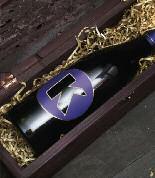
$$ $ $
Kosher food shoppers spend an average of $1000 more every year than ordinary consumers.
World’s Largest Kosher
Menorah:
The largest kosher menorah is erected each year in New York City. It is 32-feet high and weighs 4,000 pounds. It was specially designed by world renowned artist Yaakov Agam and inspired by the RaMBaM’s illustration of the menorah in the Beis Hamikdash

Chanukah Sparks
• There are two ways that the bracha is recited while lighting the Chanukah menorah: “L’hadlik ner shel Chanukah” and “L’hadlik ner Chanukah.” When we say “L’hadlik ner Chanukah” the Roshei Teivos are Lamed-Nun-Chof which are also the Roshei Teivos for “Notzer Chesed L‘alofim” – “G-d preserves kindness for thousands of generations. LamedNun-Chof are also the Roshei Teivos for “Nafshanu Chiksah

L’Hashem” – “Our souls yearn for G-d.” These phrases are the essence of the message of Chanukah.

– From the Ben Ish Chai
• יאנומשח has the same letters as ואנ חישמ!
• “Maccabee” means “strong” in Greek and is an acronym for “Mi Chamocha Ba’eilim Hashem.”
In 5765, a fourth grade yeshiva class in Chicago built a menorah from 10,770 Popsicle sticks. It was approximately 7 feet tall! The following year, the same teacher had his class build a dreidel from 14,000 Popsicle sticks. It was approximately 5 feet tall. Last year, the class built a menorah made entirely of donated toys. There were 3,770 toys and all were given to children in need.
Walking on Coals: Members of the US “Fire Walkers” walk on live coals with a temperature of 1,493 degrees F
Biggest Doughnut:
Bakery prepared the biggest jelly doughnut in the world. It was 5 feet across and weighed pounds . The doughnut was fried in a pot containing gallons of oil and contained 437,000 calories

SOUL NUTRITION
Co.
Source: Sefer HaSe’em v’HaNifla’ot, Feldheim Publishing
www.OK.org • 23
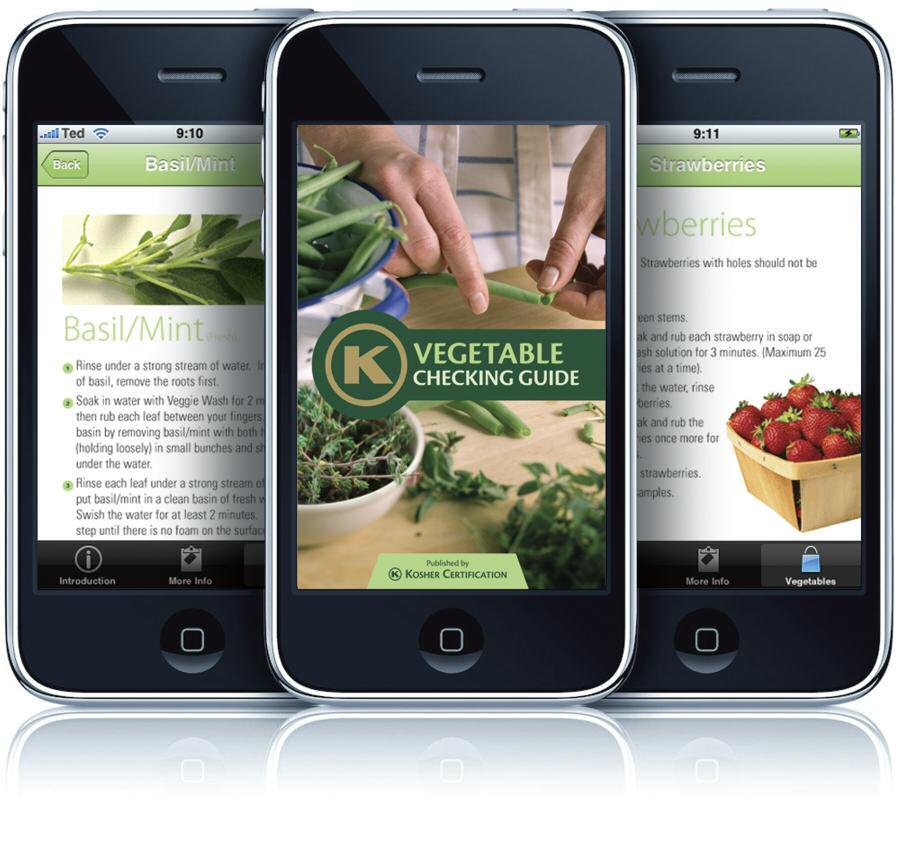


24 • www.OK.org The most powerful tool in the kitchen... now in the palm of your hand. “I eat BUG-FREE thanks to my iPhone.” KOSHER CERTIFICATION ~ Kosher Spirit, 391 Troy Avenue • Brooklyn, NY 11213 • 718-756-7500 • info@ok.org • www.ok.org Download the free ~ Vegetable Checking Guide App Available on the App Store for your iPad, iPhone or iPod Touch








 Malka
Malka
 By Chanie Brod
By Chanie Brod




































 Rabbi Chaim Fogelman, Conference Chairman
Rabbi Chaim Fogelman, Conference Chairman













 Mr. Meiky Tollman (Exec. VP of Sabra Dipping Co.) reading
Kosher Spirit
Rabbi Eli Lando – Chief Customer Relations Officer
Mr. Meiky Tollman (Exec. VP of Sabra Dipping Co.) reading
Kosher Spirit
Rabbi Eli Lando – Chief Customer Relations Officer













